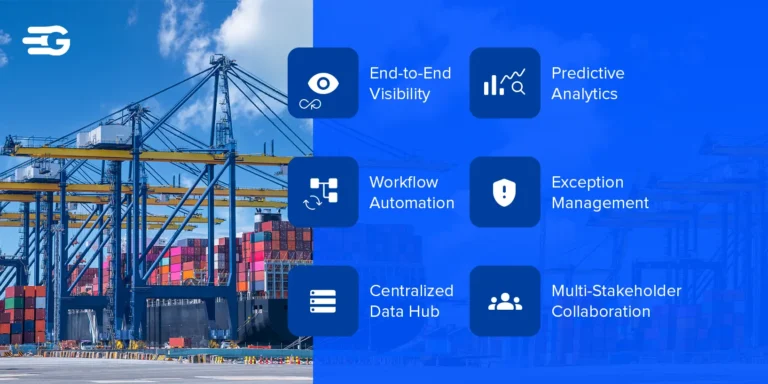Best Practices for Warehouse Inventory Management in 2025
Warehouse inventory management is evolving rapidly. In 2025, businesses face increased pressure to enhance efficiency, accuracy, and adaptability. To stay competitive, adopting modern practices and technologies is essential. Warehouse operations must evolve to handle increased order volumes and fluctuating demand while minimizing errors and waste. QR codes help tag equipment, track inventory, and access digital SOPs. Tools like The QR Code Generator make creating them easy.
Effective inventory management meets customer demands, reduces costs, and secures a competitive edge. As supply chains grow more complex, optimizing warehouse practices becomes crucial. This guide covers the top strategies for optimizing warehouse operations, focusing on technology integration, layout improvements, and workforce development.
Embracing Advanced Technologies
Implementing Warehouse Management Systems (WMS)
A Warehouse Management System (WMS) automates inventory tracking, order processing, and reporting. These systems enhance accuracy and provide real-time data access, making operations more efficient. A robust WMS can also integrate with other business systems, such as ERP and TMS, for unified data flow.
Investing in a WMS streamlines order management and improves inventory visibility, helping reduce errors and boosting overall productivity. It also supports advanced functions like cycle counting, order prioritization, and automated reporting.
Leveraging RFID and Barcode Scanning
Adopting RFID tags and barcode systems ensures accurate inventory identification and tracking. These technologies minimize manual errors and enhance inventory accuracy. Modern RFID solutions offer real-time updates and integration with cloud-based inventory systems.
According to RFgen, using RFID technology improves inventory visibility and accelerates picking and packing processes. Barcode systems remain a reliable, cost-effective option, especially when paired with mobile scanning devices for streamlined operations.
Integrating AI and Machine Learning
Artificial intelligence in warehouse management helps with demand forecasting, inventory optimization, and predictive analytics. Leveraging AI reduces stockouts and overstocking by analyzing trends and making data-driven decisions. Predictive maintenance, guided by AI, also helps reduce equipment downtime.
Vogue Business highlights how AI-based systems can predict customer demand with impressive accuracy, helping businesses stay ahead of market fluctuations. AI-driven inventory routing optimizes item placement and picking paths, saving time and labor costs.
Optimizing Inventory Control Processes
Implementing Cycle Counting
Cycle counting involves regularly counting subsets of inventory to maintain accuracy without halting operations. This method ensures continuous accuracy and helps reduce inventory discrepancies. Scheduling counts based on item value and turnover rate enhances efficiency.
Adopting Just-in-Time (JIT) Inventory
JIT inventory minimizes stock levels by receiving goods only as needed. This practice reduces holding costs and waste while maintaining inventory availability. Integrating JIT with automated replenishment systems ensures timely restocking.
Utilizing ABC Analysis
Classifying inventory into A, B, and C categories based on value and turnover rates allows focused management. This approach optimizes resource allocation and ensures high-priority items receive adequate attention. Integrating ABC analysis with WMS can automate categorization and reorder recommendations.
Enhancing Warehouse Layout and Design
Strategic Placement of High-Demand Items
Position frequently picked items near packing and shipping zones. This layout reduces picking time and improves workflow efficiency. Grouping similar items together also minimizes retrieval time.
Implementing Vertical Storage Solutions
Using vertical lift modules (VLMs) and mezzanines maximizes space without expanding the warehouse footprint. This approach increases storage capacity efficiently. Automated VLMs can significantly reduce labor costs and streamline picking processes.
Training and Workforce Development
Regular training on new technologies and safety protocols ensures your workforce stays productive and adaptable. As automated systems evolve, keeping staff skilled in WMS, RFID, and AI tools becomes vital. Incorporating simulation training for complex systems improves readiness.
Monitoring and Continuous Improvement
Set clear key performance indicators (KPIs) to track accuracy, order fulfillment, and turnover. Monitoring these metrics helps identify areas for improvement and sustain operational excellence. Regular audits and performance reviews foster a culture of continuous learning and adaptation.
Final Thoughts
Adapting to the latest technologies and refining processes are key to successful warehouse inventory management in 2025. By integrating WMS, leveraging AI, and optimizing layout, businesses can maintain accuracy and efficiency while meeting customer expectations. Embracing technology and fostering workforce skills will ensure long-term operational success.
Stay proactive, embrace innovation, and lead the way in modern warehouse management.






